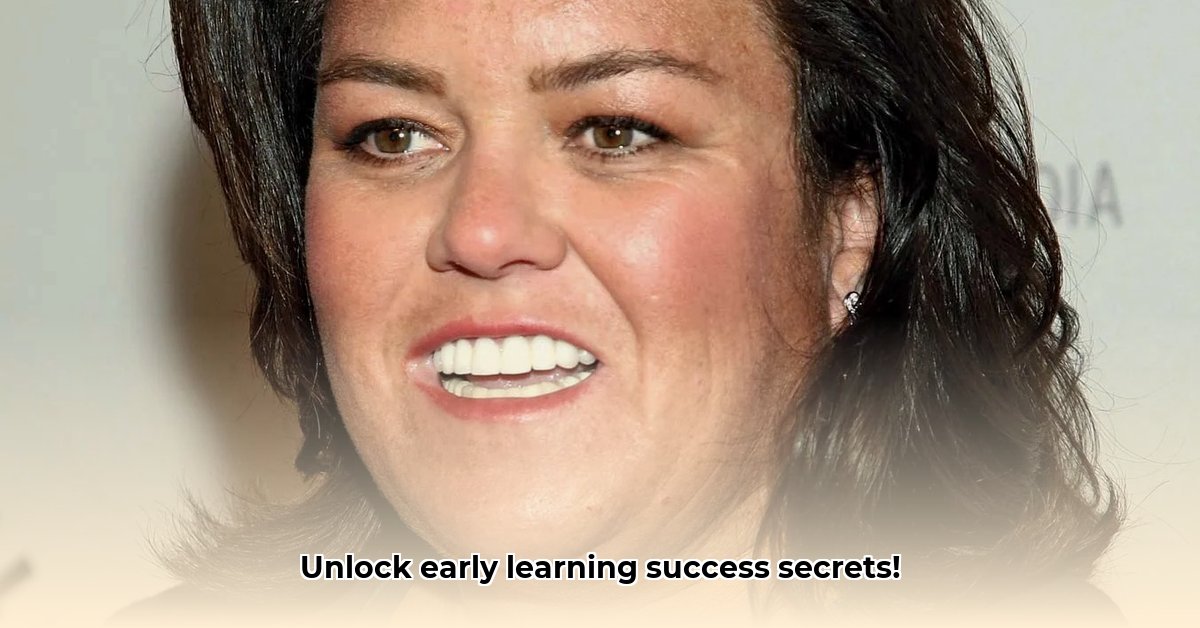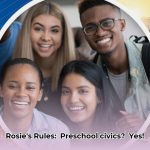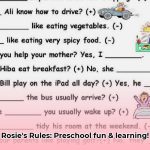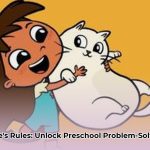Want to make learning fun for your preschooler? Rosie’s Rules, the popular PBS Kids show, makes social studies exciting! This isn’t your typical textbook learning; it’s a clever blend of storytelling and education that helps kids understand civics, geography, economics, and history without even realizing they’re learning. For a detailed curriculum breakdown, check out [Rosie’s Rules curriculum](https://www.lolaapp.com/what-does-rosie-s-rules-teach). We’ll explore how Rosie’s Rules works its magic, what makes it special, and how you can use it to help your child’s learning journey. We’ll look at what experts and parents are saying, and give you tips to make the most of this awesome show. Get ready to discover why Rosie’s Rules is a winning combination of entertainment and education!
Rosie’s Rules Social Studies Curriculum: Unlocking Early Learning Success
Rosie’s Rules is more than just a cute cartoon; it’s a smart way to introduce preschoolers to the world around them. This PBS Kids show, a creation of 9 Story Media Group and Brown Bag Films, blends entertainment with essential social studies concepts. It fosters an early understanding of community, culture, and the rules that govern our society, all the while captivating young minds with its vibrant characters and engaging storylines. Let’s explore the advantages of this curriculum in early childhood education and how it sets the stage for future learning.
Getting to Know Rosie and Her Crew
Imagine a show where learning feels like playtime. That’s Rosie’s Rules. The series revolves around Rosie Fuentes, a curious and enthusiastic 5-year-old Mexican-American girl, her fluffy cat Gatita, and her multicultural family. The show uses everyday situations to explore complex social studies concepts in a way that’s accessible and relatable to preschoolers. Through Rosie’s adventures, children learn about the world beyond their homes, fostering a sense of curiosity and a desire to understand how things work, promoting early childhood development.
What’s on the Curriculum? A Sneak Peek
Rosie’s Rules weaves social studies into the fabric of its stories. It’s social studies magic! The curriculum covers a range of essential topics:
- Civics and Government: Rosie learns about rules, responsibilities, and community engagement, laying the foundation for good citizenship. Episodes show her interacting with community helpers and understanding the importance of following rules.
- Geography: Family trips and explorations introduce different places, environments, and cultures. Maps and visual aids in Rosie’s home reinforce geographical concepts.
- Economics: Simple concepts like saving, spending, and sharing are presented through everyday scenarios, teaching children about financial literacy in an age-appropriate way.
- History: Stories unfold, highlighting historical events and traditions in ways that preschoolers can easily grasp. Family stories and cultural celebrations bring history to life.
The show doesn’t explicitly teach these topics; instead, it allows the lessons to emerge naturally from the narrative. For instance, Rosie’s interaction with her family subtly explains the importance of cooperation and working together, showcasing the benefits of early social skills education. This integrated approach makes learning feel organic and less like a chore.
The Power of Storytelling and Likeable Characters
What truly sets Rosie’s Rules apart is its masterful storytelling. The episodes are captivating for both preschoolers and parents! The characters are charming and relatable. Rosie and Gatita are loveable, and the inclusion of a bilingual family, seamlessly blending Spanish and English, promotes a sense of inclusivity and helps children appreciate diverse cultures. The diverse cast of characters ensures that many children—regardless of their background—can see themselves reflected in the show, encouraging a sense of belonging and understanding. Gatita, the family cat, plays a vital role in teaching empathy and emotional intelligence – important life skills often overlooked.
How the Teaching Works: It’s All About the Storytelling
The show’s educational approach is delightfully subtle. It avoids the “lecture” style of teaching and utilizes a playful, non-didactic approach, meaning the learning happens organically through the unfolding story. Before filming even begins, 9 Story Media uses a method called “storybook testing.” They show the story to preschoolers to ensure the content is not only engaging but also fully understood. This ensures that the show’s impact is maximized and that everything aligns with a preschooler’s developmental stage. The show’s developers aim to improve preschool learning outcomes with their thoughtful design.
A Balanced Look: Strengths and Weaknesses
Let’s look at the positive and negative aspects of the Rosie’s Rules curriculum to get a complete picture of early learning curriculum impact.
Pros:
- Highly Engaging: Rosie and her friends are incredibly charming, making the show a joy to watch.
- Subtle Learning: The show seamlessly integrates social studies concepts, making learning effortless.
- Cultural Sensitivity: The representation of a bilingual family and diverse characters promotes understanding and inclusivity.
- Age-Appropriate Content: The storybook testing ensures that the material is perfect for preschoolers’ developmental stage.
- Accessibility: Available in both English and Spanish, making it accessible to a wider range of families.
- Expert Creation: Created by Emmy Award-winning writer Jennifer Hamburg and executive produced by Mariana Diaz-Wionczek, PhD, ensuring high-quality educational content.
Cons:
- Limited Long-Term Data: Research into the lasting effects of the curriculum on knowledge retention is still ongoing.
- Potential for Oversimplification: Complex social issues may be presented in a simplified manner, which may require further explanation from parents or educators.
- Reliance on Visual Learning: The show’s heavy reliance on visual learning may not cater to all learning styles.
- Dependence on Parental Engagement: While the show is engaging, its educational impact is maximized when parents actively participate and discuss the content with their children.
More research is needed to fully understand the long-term impact of the Rosie’s Rules curriculum. This is a common challenge with educational programs targeted toward very young children, and further study will shed more light on its enduring effectiveness.
What People Are Saying: A Positive Response
The response to Rosie’s Rules has largely been positive. Parents and educators alike praise its engaging nature and its gentle approach to teaching social studies. Many reviewers specifically highlight the diverse representation and how well the show connects with bilingual families. The positive feedback suggests that the show succeeds in its goal of making social studies fun and accessible for young learners. This confirms that Rosie’s Rules has seen positive early childhood education reviews. Sara DeWitt, Senior Vice President and General Manager, PBS KIDS, notes that “Many families around the country will recognize themselves in Rosie’s amazing, culturally-diverse extended family and connect the rich Mexican, Southwestern and Midwestern traditions, food, art, language, and music featured in the series with the unique customs and culture of their own families.”
Making the Most of Rosie’s Rules: Tips for Parents and Educators
Rosie’s Rules isn’t just about passively watching TV; it’s about starting conversations! Here’s how to maximize its potential, ensuring a positive early childhood development environment:
- Watch together: Make it a family activity. Discuss the story, characters, and the lessons learned.
- Turn it into a discussion: Ask your child questions about what happened in the episode; what did they learn? This fosters critical thinking skills.
- Real-world application: Connect the show’s situations to your child’s daily life. Talk about cooperation, sharing, and planning. For example, if Rosie learns about saving money, discuss ways your child can save for a toy they want.
- Use it as a springboard: The show provides excellent starting points for teaching concepts like cooperation, sharing, and problem-solving. Use the show as a catalyst for more in-depth discussions or activities.
- Explore related resources: Take advantage of the parent resources, games, and activities available on the PBS KIDS website to extend the learning experience.
- Encourage bilingualism: Embrace the show’s bilingual elements and encourage your child to learn new Spanish words and phrases.
- Create a social studies-rich environment: Incorporate maps, calendars, and family photos into your home to reinforce the concepts presented in the show.
- Engage with the community: Participate in local events and activities that celebrate different cultures and traditions.
By actively engaging with the show, parents and educators can transform Rosie’s Rules from a passive viewing experience into an interactive and educational adventure.
Rosie’s Rules offers a fresh and engaging approach to early childhood social studies education. While long-term studies are ongoing, initial responses suggest it’s a promising way to help preschoolers develop a deeper understanding of the world around them. By combining captivating storytelling with important educational elements, it shows that learning can be both fun and effective for even the youngest learners.
How Does Rosie’s Rules Impact Preschoolers’ Long-Term Social Studies Knowledge?
Key Takeaways:
- Rosie’s Rules cleverly integrates social studies concepts into engaging narratives.
- The show’s relatable characters and diverse representation foster cultural understanding.
- A playful, non-didactic approach keeps preschoolers engaged.
- While immediate impact is evident, how Rosie’s Rules impacts preschoolers’ long-term social studies knowledge
- The Accidental Breakthrough: Penicillin’s Discovery and Impact - August 1, 2025
- Medieval Universities: Shaping Modern Academia - August 1, 2025
- The Radium Girls: Workplace Safety Lessons from a Tragic Past - August 1, 2025















